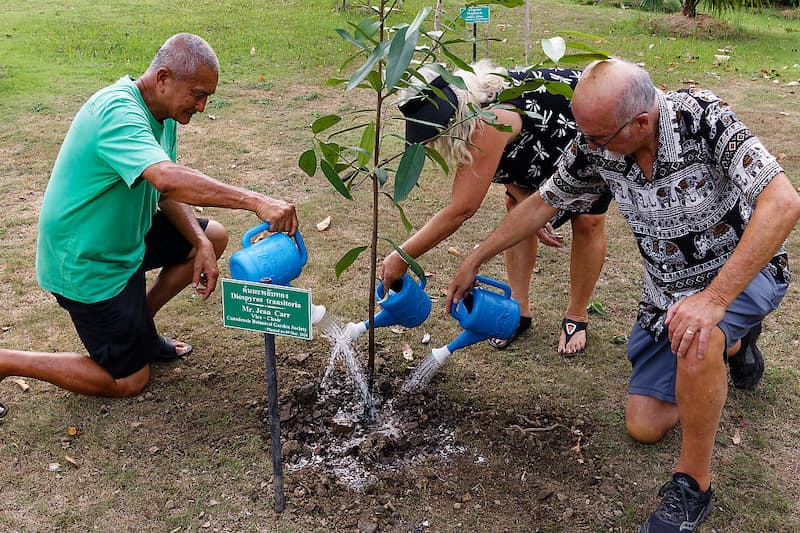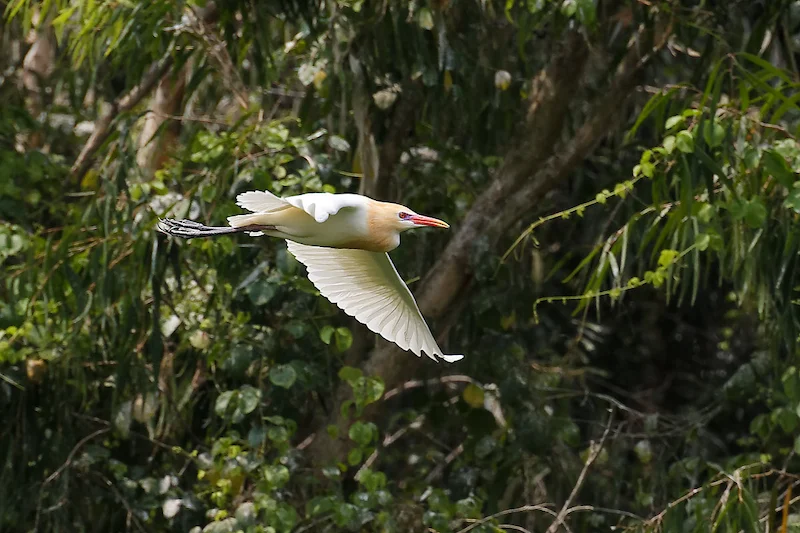South East Asia Highlight: NoonNooch, Elephants and Tra Su Bird Sanctuary
Exploring Nature’s Bounty: A Day at NongNooch Tropical Botanical Garden
Nestled about 90 minutes south of Bangkok lies NongNooch Tropical Botanical Garden. The land was originally designated to become a fruit plantation of mangoes, oranges and coconuts but during a trip abroad, owner Mrs. Nongnooch was inspired by the beauty of world-renowned gardens and decided to turn the fruit orchard into a tropical garden of ornamental flowers and plants. Under the transformational leadership of her son, Kampon Tansacha, the garden was later opened to the public.
Suzanne and I had the privilege of visiting NongNooch. This stunning tropical garden offers unique and immersive experiences for visitors.
Our gracious hosts extended an invitation to plant a tree on behalf of the Canadensis Botanical Garden Society within their arboretum. The tree we planted, the “Diospyros transitoria,” symbolized not only our connection to nature but also the enduring bond between two botanical gardens on opposite sides of the world.
Guiding us through NongNooch were Kampon Tansacha, owner and founder of NongNooch, and Anders Lindstrom, Director of Collections. Anders has an interesting background. Newly degreed with a University education in Sweden some 35 years ago, he visited Thailand; while visiting NoonNooch, he mentioned to them that they had not implemented the best botanical practices. They were impressed and hired him, and he never left. Their expertise and passion was evident throughout the fabulous gardens, enriching our understanding of the diverse flora that thrives within this garden.


A Day at an Elephant Park
Our exploration of Thailand extended beyond the botanical realm as we spent a day in a nearby Elephant Park, where gentle giants roamed freely amidst lush surroundings. In Thailand, with a population of 70 million people, there is no more open land for elephants to roam freely. Elephants now reside in countless privately owed lands, or elephant sanctuaries if you will.. There appear to be two categories of elephant sanctuaries; one type where elephants live as they would in nature; another type where activities such as riding elephants is permitted. We spent a day in the first type of sanctuary, where we fed elephants, walked with them through fields – they apparently never stop eating, unless they are sleeping – , gave them mud baths and then swam with them in a river.
It was a fabulous day. We witnessed the profound connection between humans and elephants, a bond nurtured with care and respect.

Tra Su Bird Sanctuary
Our journey included a 1/2 day in the tranquility of the Tra Su Bird Sanctuary in Vietnam. It is the most impressive bird sanctuary we ever visited, as measured by the quantity of birds and variety of species, combined with bird calls echoing through the air. The birds congregated there because of the availability of their food and abundance of water. The richness of flora, the abundance of water and the tropical climate makes Tra Su an ideal location for more abundance and diversity of plants, and therefore bird food. Amidst the verdant marshlands, we witnessed the harmonious coexistence of diverse ecosystems, a testament to the delicate balance of nature.

We are grateful for the unforgettable experiences shared and the enduring friendships forged.







Leave a Reply
You must be logged in to post a comment.